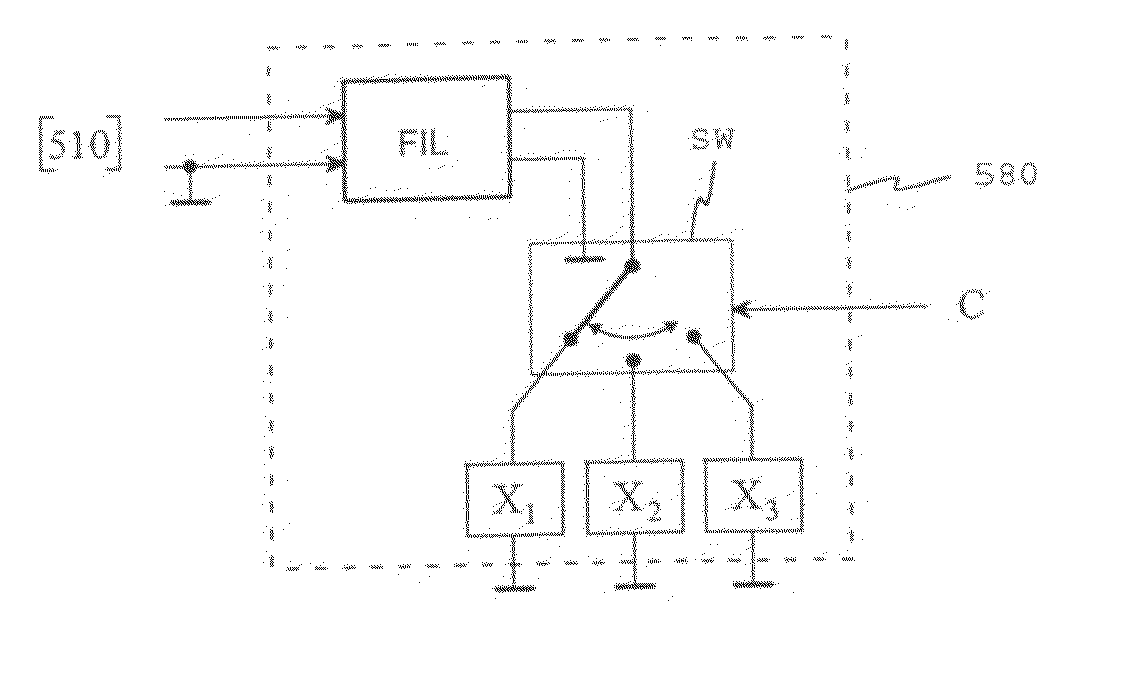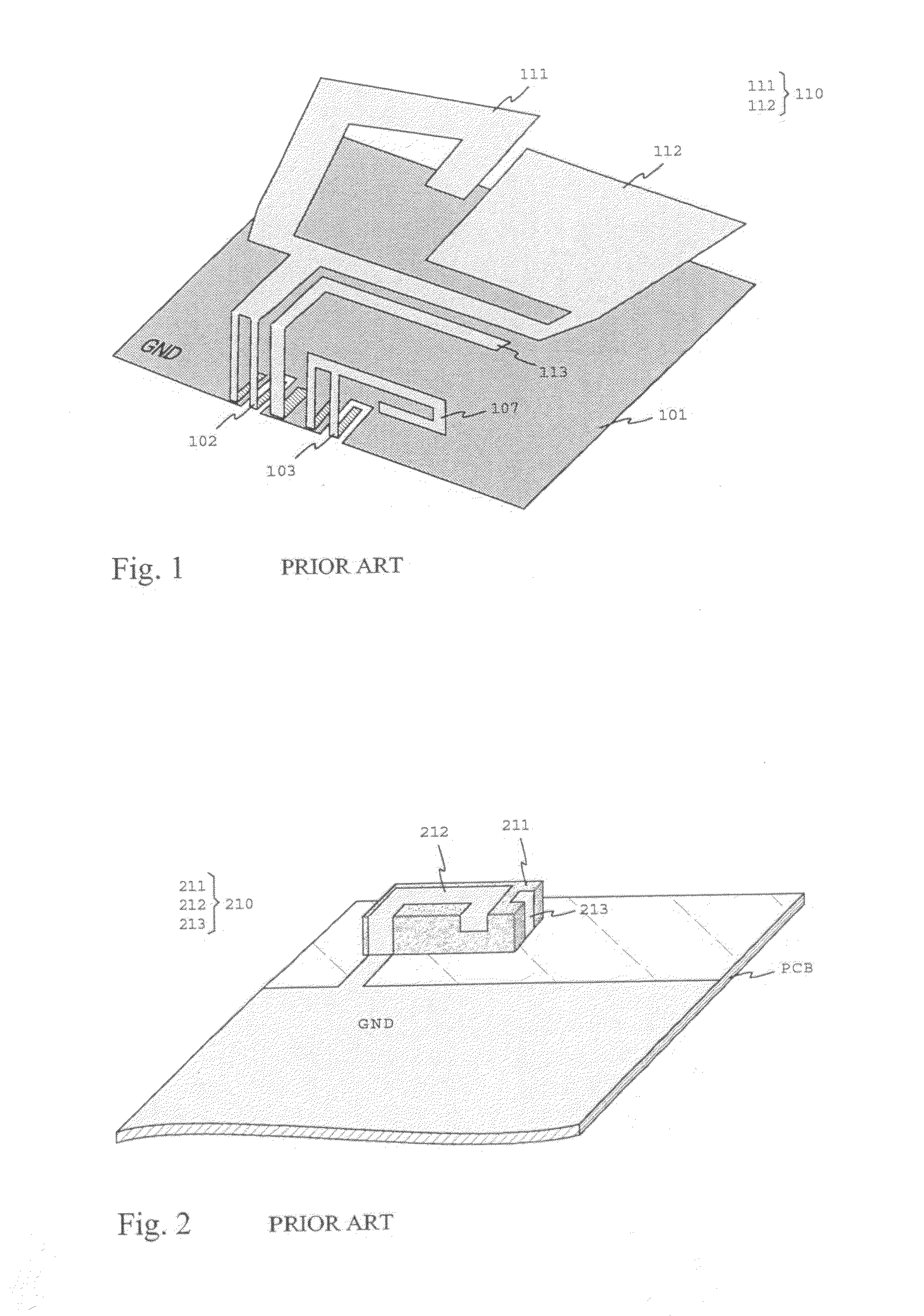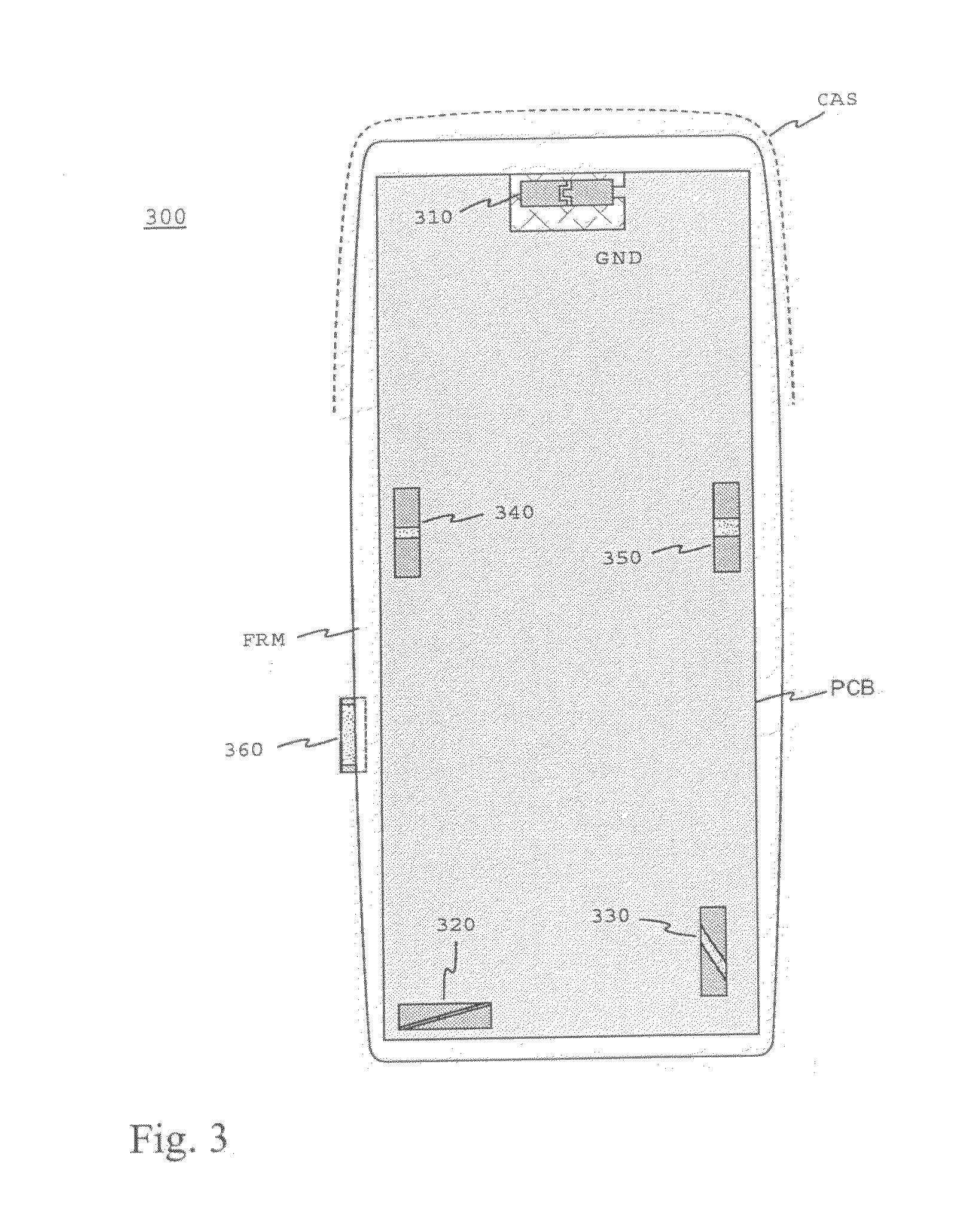Multiband antenna system and methods
a multi-band antenna and antenna technology, applied in the direction of resonance antennas, independent non-interacting antenna combinations, radiating element structural forms, etc., can solve the problems of insufficient characteristics, more demanding antenna design tasks, and insufficient antennas of the kind described, so as to achieve small antenna size, small bandwidth, and high permittivity
- Summary
- Abstract
- Description
- Claims
- Application Information
AI Technical Summary
Benefits of technology
Problems solved by technology
Method used
Image
Examples
Embodiment Construction
[0049]Reference is now made to the drawings wherein like numerals refer to like parts throughout.
[0050]FIGS. 1 and 2 were already described in connection with the prior art.
[0051]FIG. 3 shows an example of an antenna system according to the invention as a layout drawing. There is a radio device 300 with a circuit board PCB, plastic frame FRM and casing CAS in the drawing. A large part of the surface of the circuit board on the side visible in the drawing consists of a conductive ground plane GND. In this example the antenna system includes six antennas. Each one of these comprises an elongated antenna component with a ceramic substrate and two radiating elements. The ground plane around the antenna component is also considered to be a part of the antenna here. In this example, the radiating elements of each antenna component are of the same size so that they resonate on the same, relatively narrow frequency range. The feed conductor of an antenna is connected to one element, and the...
PUM
 Login to View More
Login to View More Abstract
Description
Claims
Application Information
 Login to View More
Login to View More - R&D
- Intellectual Property
- Life Sciences
- Materials
- Tech Scout
- Unparalleled Data Quality
- Higher Quality Content
- 60% Fewer Hallucinations
Browse by: Latest US Patents, China's latest patents, Technical Efficacy Thesaurus, Application Domain, Technology Topic, Popular Technical Reports.
© 2025 PatSnap. All rights reserved.Legal|Privacy policy|Modern Slavery Act Transparency Statement|Sitemap|About US| Contact US: help@patsnap.com



